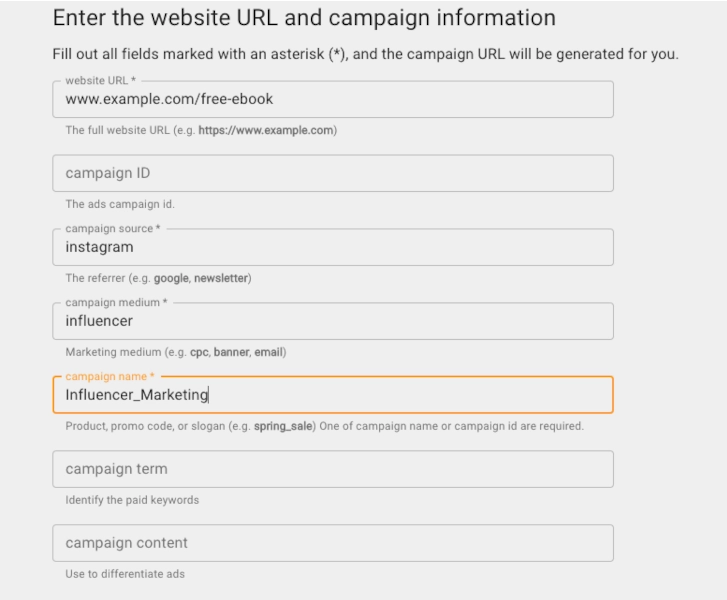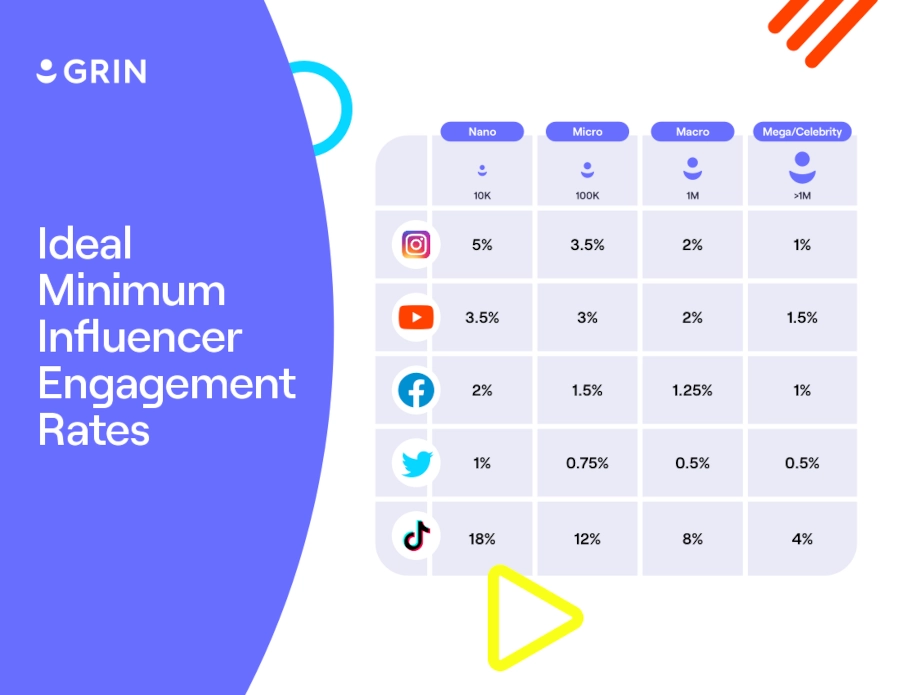Reading Time: 19 Minutes
Influencer marketing spend in the United States has seen nearly a 100% increase over the last three years as more and more brands discover the benefits of leveraging authentic creator content. But while U.S. marketers prepare to spend more than $4 billion on influencer marketing in 2022, one question still remains:
How can I track and measure my marketing campaigns to ensure I get the most out of those dollars?
Without answering this question on influencer marketing measurement, marketing strategies are implemented based on feelings, not facts. Measuring the success of a marketing campaign is pivotal to success, and identifying the right metrics that can provide that information will help you make data-informed strategy decisions.
The first step to influencer marketing measurement is mapping out a set of clear goals. These goals are the only way to create a focus for your marketing campaign to make sure you are focusing your time and energy on what is truly working.
There are two key components each goal should have:
For example, you might come out of a brainstorming session with a goal to “increase web traffic.” But that’s far too vague. Instead, nail down a more precise goal like “increase website visitors by 30% in 4 months.”
Whatever goal(s) you choose, make sure your objectives and deadlines are challenging but attainable. A goal that’s too difficult to achieve is a sure way to drain your resources and demotivate your team.
The goals you set make it possible for you to track the progress and performance of your campaign. But to measure your campaign goals effectively, you’ll need to define certain key performance indicators (KPIs).
Tracking the right numbers is critical to the success of your influencer marketing campaign. Not only does setting KPIs help you identify success, but it also equips you to communicate those wins to your team (and your boss) that adds to the brand’s overall marketing goals.
If the goal of your campaign is to increase brand awareness, you need to track the reach, engagement, and impressions your content generates.
You should also look at any brand mentions your influencer-generated content receives. Keep in mind, the nature of these mentions and comments is critical. If you notice a surprising amount of negative sentiment, you need to figure out what went wrong and resolve the issue as soon as possible.
Always keep track of followers gained during your influencer marketing campaign.
To ensure the new followers originated from the campaign and not some other source, you should start tracking your followers weeks before the campaign launches. That way, you can compare the followers you got before your launch to followers gained during the campaign and get a better idea how much follower growth resulted from the campaign.
Impressions are the number of times a post was visible in timelines or feeds on social media platforms. This metric is one of the most effective ways to gauge your brand’s visibility to your target audience, and ultimately, calculate your brand awareness.
Impressions also give you helpful data about the reach of your content with different influencers, which can help refine your influencer selection process for future campaigns.
Branded hashtags, as the name implies, contain the name of your brand, but they could also include a slogan, product name, or tagline for one of your campaigns.
This approach allows you to track the performance of your campaign by simply focusing on your branded hashtags. It also makes it easy to collect user-generated content from users who try your product, love it, and want to help spread the word.
Depending on your campaign, a conversion can be any number of things including outright purchases, trial sign-ups, subscriptions, etc. In fact, a strategy that involves multiple conversion metrics is ideal so consumers have more than one way to commit to your brand.
Different conversion metrics also make for more accurate measurements when it comes time to calculate the effectiveness of your campaign. The more ways you can measure how an influencer led someone to take a certain action, the better idea you’ll have of whether they are someone you will want to partner with long-term.
Trackable links are one of the easiest ways to calculate your campaign’s conversions. Each link is assigned a unique URL that can be read through common analytics software like Google Analytics. Those links can then be used when sharing a blog post, email link, or other asset intended to drive conversions in order to show exactly where each conversion originated.

Affiliate links often include exclusive deals to help affiliates generate leads and commissions, while discount codes generally include limited-time offers that consumers can use at checkout.
It’s up to you to decide which works best for your campaign, but each helps you create a compelling call-to-action for consumers, and provides trackable URLs that can easily be used to attribute conversions to your influencers.
Gathering and sorting metrics by content helps refine your campaign strategy and illustrates which styles and types of content produce the response you want from your audience.
Not all engagements are equally valuable, but it’s important to know the engagement that each piece of content delivers. Keep an eye on the following:
Your engagement rate is the number of post engagements divided by the number of views or followers. The higher the engagement rate on a piece of content, the more effectively it resonated with an influencer’s audience.
Here is a quick look at engagement rates you should strive for based on the type of influencer and their platform:

Make sure to keep track of how much total content gets produced during your campaign. Refer back to your list once you have calculated engagements and engagement rates to see if any of your most successful content can be repurposed on other channels.
Now that you have all the pieces in place, it’s time to see if your efforts are actually driving more traffic to your website. Calculating web traffic is a great way to measure the effectiveness of your influencer marketing campaign because it reveals your true audience size, as well as how many potential customers at a time are hovering around your product or service.
Google Analytics is the best tool for measuring traffic and gives insights into how many people visited your website, where they came from, and how much time they spent on your site.
Setting up URLs for your campaign makes this process a lot easier since it allows you to filter out many unnecessary elements, leaving you with only the most important details from the campaign.
For more, check out our blog “20 Key Influencer Marketing KPIs to Track.”
Now it’s time to answer the million-dollar question: Did my influencer marketing campaign work?
Measuring your influencer revenue is the first step to determining the success of your program. By this point in your campaign, you should have the following sales metrics handy:
Now examine the costs associated with your influencer program. Be sure to include the following data:
Subtract your costs from your sales to calculate profit. ROI is calculated by dividing your profits by your costs.
Influencer program sales – Influencer program costs = Influencer program profit
Influencer program profit / Influencer program costs = Influencer program ROI
While all leading social channels offer like, comment, and sharing capabilities, many platforms and post types have other fun (and useful) ways users can engage.
For example, TikTok allows users to react, comment, duet, and stitch (create an alternate ending to another user’s video).
@madisonbeer #duet with @charlidamelio 🖤🧚🏻🖤
♬ Sweet and Salty – goalsounds
Instagram Stories also let users react, share, and interact with posts in the form of polls, swipe-ups, etc.
No matter your platform, take a moment to examine all the ways users can interact with your influencer content and incorporate those engagements into your KPIs.
You don’t help anyone by holding your campaign KPIs close to the chest. Keep your influencers in the loop about your goals and expectations so they are better equipped to help you achieve your objectives.
Remember, it’s OK to adjust your campaign KPIs as often you and your influencers feel is necessary. Just be sure to communicate changes clearly with your influencer team to keep everyone on the same page about how campaign success is measured.
Include your influencers if you’re planning an event you think they could help with. For example, many brands intentionally build their experiential campaigns around their favorite influencers. The same is true for live virtual events.
Repurposing influencer content can drastically reduce costs and increase revenue across your entire marketing program.
Try filling your website, email newsletters, and social media feeds with lifestyle content from your top influencers to streamline your content marketing strategy and increase your influencer ROI.
But keep in mind, you need permission from your influencers to repurpose their content. It’s standard practice to include content repurposing rights in your influencer contracts.
Your marketing funnel should inform your influencer KPIs. Whether your audience is just learning about your brand for the first time or making a purchase, certain campaign metrics reveal how well consumers flow through the funnel.
In much the same way that you attached key campaign metrics to each of your KPIs, you can assign numbers to each stage of your marketing funnel.
At first, you might be able to track the success of your influencer marketing campaign using spreadsheets and information pulled from Google Analytics. Facebook and Instagram also have free analytics tools your influencers can use and then share that data with you.
But as you scale your influencer marketing program, you will want to automate everything you can to get the most out of your time and budget (you’ll also spare your influencer managers from a massive headache trying to manually record all of that data from multiple platforms).
The right influencer marketing software automates your program to the point that one employee can do the work of an entire team. Instead of digging for the numbers across multiple platforms and transcribing them into a spreadsheet, all the necessary performance metrics are right at your fingertips.
The best automation tools allow your brand to track and measure:
A successful influencer marketing campaign cannot exist without effective and efficient methods for tracking and measuring its performance. Remember to establish clear goals at the onset of your campaign and be thoughtful as to which influencers have the skills necessary to help you achieve these goals. Once you know your campaign is a success, you’ll have everything you need to grow and continue driving maximum ROI for your entire marketing strategy.
Learn more about influencer marketing: Influencer Marketing 101
Our team keeps a finger on the pulse, so you’re always working with the latest information.